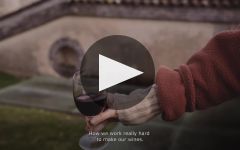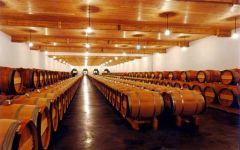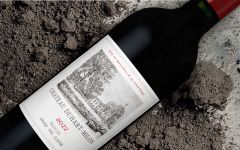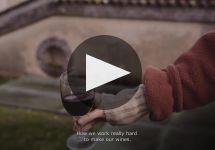Chateau Duhart-Milon (Futures Pre-Sale) 2024
-
James
Suckling -
Robert
Parker - Vinous



Product Details
Your Rating
Somm Note
Winemaker Notes
Blend: 78% Cabernet-Sauvignon, 22% Merlot
This wine does not include the blanket 10% tariff imposed in April 2025. When the wines are shippable in fall of 2027, customers will have the option to pay any tariff in place at the time or to keep their wines stored in a temperature-controlled facility free of charge in France.
Professional Ratings
-
James Suckling
A lighter vintage that highlights finesse rather than power or concentration. Fresh blue fruit with a medium body and fine-grained tannins. Fresh but supple in a refined, medium-long finish. 78% cabernet sauvignon and 22% merlot.
Barrel Sample: 93-94 -
Robert Parker's Wine Advocate
A blend of 78% Cabernet Sauvignon and 22% Merlot, the 2024 Duhart-Milon was cropped at 32 hectoliters per hectare, and it was here that the Lafite team concluded the harvest. Offering up aromas of cassis and red berries mingled with hints of violets, pen ink, licorice and toasty oak, it's medium to full-bodied, supple and fleshy, with a round, integrated, charming profile, concluding with a moderately persistent finish.
Barrel Sample: 90-93 -
Vinous
The 2024 Duhart-Milon opens with strong Cabernet Sauvignon inflections. Blue-toned fruit, lavender, spice and dried herbs open first, all framed by brisk acids and supporting tannins that lend shape. The 2024 includes 14% press wines, about the norm here. This is a very promising Duhart. –Antonio Galloni
Barrel Sample: 91-93
Other Vintages
2023-
James
Suckling - Decanter
- Vinous
-
Robert
Parker -
Jeb
Dunnuck
-
Jeb
Dunnuck -
James
Suckling - Decanter
-
Robert
Parker
-
Wine
Enthusiast -
James
Suckling - Decanter
-
Robert
Parker - Vinous
-
Jeb
Dunnuck
- Decanter
-
Wine
Enthusiast -
James
Suckling -
Jeb
Dunnuck -
Robert
Parker - Vinous
-
Wilfred
Wong
-
James
Suckling -
Robert
Parker -
Wine
Spectator - Decanter
-
Jeb
Dunnuck
-
James
Suckling -
Wilfred
Wong -
Wine
Enthusiast - Decanter
-
Robert
Parker -
Jeb
Dunnuck -
Wine
Spectator
-
James
Suckling - Decanter
-
Wine
Enthusiast -
Wine
Spectator -
Jeb
Dunnuck -
Wilfred
Wong -
Robert
Parker
-
James
Suckling - Decanter
-
Jeb
Dunnuck -
Wine
Spectator -
Robert
Parker -
Wine
Enthusiast
-
Wine
Enthusiast -
James
Suckling - Decanter
-
Robert
Parker -
Jeb
Dunnuck
-
Wine
Spectator -
Wine
Enthusiast -
James
Suckling - Decanter
-
Wine
Enthusiast -
James
Suckling -
Wine
Spectator
-
Wine
Spectator -
James
Suckling -
Wine
Enthusiast -
Wilfred
Wong -
Robert
Parker
-
Robert
Parker -
Jeb
Dunnuck -
James
Suckling -
Wine
Enthusiast -
Wine
Spectator
-
Robert
Parker -
Jeb
Dunnuck -
Wilfred
Wong -
James
Suckling -
Wine
Enthusiast -
Wine
Spectator
-
Robert
Parker -
Wilfred
Wong -
James
Suckling -
Wine
Enthusiast
-
Wine
Enthusiast
-
Wine
Enthusiast -
Robert
Parker
-
Robert
Parker -
Wine
Spectator -
Wine
Enthusiast
-
Robert
Parker
-
Robert
Parker -
James
Suckling -
Wine
Spectator
-
Wine
Spectator -
Robert
Parker
-
Wine
Spectator -
Robert
Parker
-
Robert
Parker
-
Wine
Spectator







In the early 18th century, Pauillac began widespread grape cultivation at the urging of the Lafite lords. The Milon wines served as additional income for Lafite’s master, and became Château Lafite’s second wine. The 1855 classification recognized the quality of Duhart-Milon’s soil by ranking it as the only 4th growth wine in Pauillac. Between 1830 and 1840, the Castéja family was left an inheritance by both Mandavy and the Duhart widow (35 acres). The family thus possessed a 99 acre vineyard that was named Duhart- Milon. The property changed ownership many times over the years and suffered a decline in the quality of its’ wines. The property was named after the Sieur of Duhart, gun-runner to Louis XIV, who originally owned the property, and from the name of the little hamlet of Milon which separates the Duhart-Milon vineyard from Château Lafite.
In 1962, Domaines Barons de Rothschild (Lafite) acquired the property from the Castéja family. Since the acquisition by Domaines Barons de Rothschild (Lafite) the vineyards have been totally overhauled and the chais renovated. A finishing touch to a remarkable 40 year effort to reclaim the Médoc 4th growth wine ranking for Château Duhart-Milon.

One of the world’s most classic and popular styles of red wine, Bordeaux-inspired blends have spread from their homeland in France to nearly every corner of the New World. Typically based on either Cabernet Sauvignon or Merlot and supported by Cabernet Franc, Malbec and Petit Verdot, the best of these are densely hued, fragrant, full of fruit and boast a structure that begs for cellar time. Somm Secret—Blends from Bordeaux are generally earthier compared to those from the New World, which tend to be fruit-dominant.

The leader on the Left Bank in number of first growth classified producers within its boundaries, Pauillac has more than any of the other appellations, at three of the five. Chateau Lafite Rothschild and Mouton Rothschild border St. Estephe on its northern end and Chateau Latour is at Pauillac’s southern end, bordering St. Julien.
While the first growths are certainly some of the better producers of the Left Bank, today they often compete with some of the “lower ranked” producers (second, third, fourth, fifth growth) in quality and value. The Left Bank of Bordeaux subscribes to an arguably outdated method of classification that goes back to 1855. The finest chateaux in that year were judged on the basis of reputation and trading price; changes in rank since then have been miniscule at best. Today producers such as Chateau Pontet-Canet, Chateau Grand Puy-Lacoste, Chateau Lynch-Bages, among others (all fifth growth) offer some of the most outstanding wines in all of Bordeaux.
Defining characteristics of fine wines from Pauillac (i.e. Cabernet-based Bordeaux Blends) include inky and juicy blackcurrant, cedar or cigar box and plush or chalky tannins.
Layers of gravel in the Pauillac region are key to its wines’ character and quality. The layers offer excellent drainage in the relatively flat topography of the region allowing water to run off into “jalles” or streams, which subsequently flow off into the Gironde.
